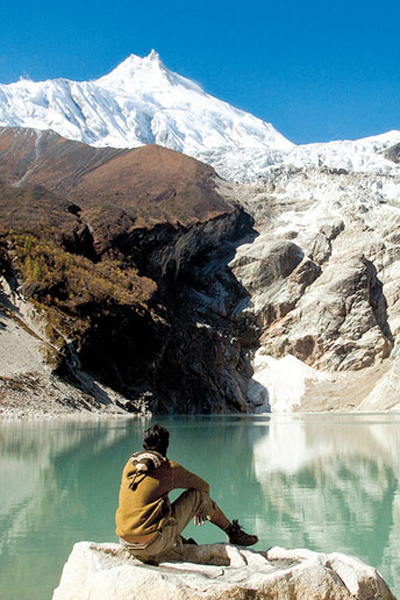
Himalayan treks were viewed in a "very compartmentalized way" and the idea of "one trail to rule them all" was eclipsed by the fabled trails at the highest peaks. [Photo/ Shanghai Daily]
In the shadow of Mt Everest and its magnetic lore, a cross-border route with a grand name, the Great Himalaya Trail, is being touted as an epic, untapped alternative to the bucket-list trek to base camp on the world's highest mountain.
Trekking this trail is an odyssey, not a routine vacation, and even promoters admit that it's more a theory or consumer product for an untested market than a continuous path. Instead, it's a web of paths, many unmapped and barely connecting, that meander east to west along the Himalayan range.
Granted, the Great Himalaya Trail lacks the history and utility of the Silk Road, the ancient trade network that linked Asia to Europe, or the cohesion and accessibility of the Appalachian Trail for hikers in the United States.
Instead, it is what trekkers and climbers make of it: a one-time hike through forests and grasslands at lower elevation, an assault on high passes that demand technical skill, or a periodic pilgrimage to sample chunks of the rugged expanse.
Susanne Stein, a 44-year-old German, completed an eastern trek on Nepal's section of the trail with three guides in late 2011 and is preparing for the central and western leg in February. When it's all over, she'll have covered 1,700km in 165 days.
"One thing I like very much is just to move," said Stein, a health specialist whose assignments for international aid groups have included Sudan's Darfur region, Pakistan's earthquake-hit Kashmir region, Afghanistan, and Nepal. "I always have the feeling I want to see around the corner. This keeps me going somehow."
Stein set out a week after a deadly earthquake in the Himalayan region. Some paths had been virtually wiped out by landslides, forcing her team to crawl at times. In the past, she visited the Everest region on her own. But Stein prefers guides on the Great Himalaya Trail because they motivate her when she is exhausted.
"The GHT goes through areas where there is no guesthouse, no food, and no defined trail. So I guess for the average tourist, it is too difficult to do it alone. Besides the fact that you need to be fit. Probably for people with very good navigation skills, and a good map and GPS, it's possible," Stein wrote in an e-mail.
A Nepal-based campaign aims to transform the Great Himalaya Trail into a basket of options for adventurers who prefer itineraries without roads and teahouses. It says western districts like Dolpa, Humla and Mugu offer rich scenery and local culture that has little outside exposure.
Promoters have broken the Nepalese stretch into 10 sections that can each be walked in a few weeks. Dorendra Niraula, an official at Nepal's tourism ministry, hopes repeat visitors will trek parts of the trail over five or 10 years.
"We are in the initial stage of the project," he said. "It's a challenge. We are trying to diversify tourism."
The goal is for people to "go to places they have not thought of going," said Robin Boustead, an Australia-based trekker who traversed 6,000 kilometers of Himalayan trails and says he has another 4,000 kilometers to go. He charted his trips with GPS, published a guide book and runs a trail website.
